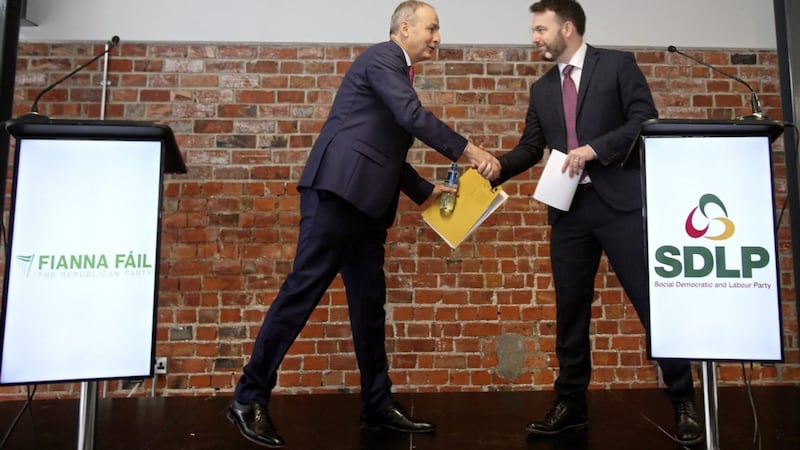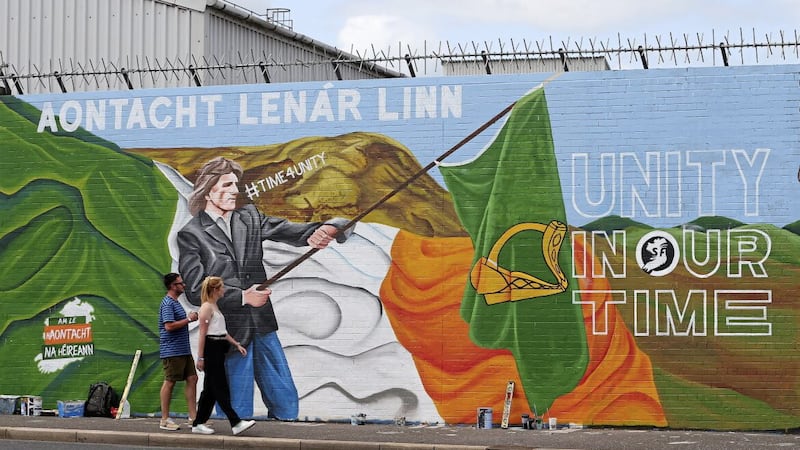JUST when you think things cannot get any worse, they generally do, as SDLP leader Colum Eastwood has discovered.
He tried to placate those opposed to a deal with Fianna Fáil by taking the original idea of a merger, or similar, and watering it down to the vague concept of partnership.
Despite that, almost one-third of those who voted on the deal are still opposed to any links with Fianna Fáil.
That leaves just over two-thirds of the party committed to a proposal which is so far largely devoid of substance.
So the problem now for the SDLP leadership is that the FF partnership is too loose to have a significant external impact on the Northern electorate and too binding to maintain internal party cohesion.
Things have just got worse for the SDLP. For a party in long-term electoral decline, that is not a good place to be.
Whether or not you agree with the Fianna Fáil connection, it is hard to avoid the conclusion that the process was badly managed.
Following a long courtship, many expected a wedding, or at least an engagement, between the two parties.
But the SDLP's strict parents objected to a mixed marriage, in the cross-border sense, and the leadership backed off hoping to keep everyone happy.
So the parties agreed to be just good friends. It is a friendship which will do Fianna Fáil no harm and do the SDLP little good.
The main beneficiary will be Sinn Féin, which might have expected an all-Ireland rival, but now finds the road ahead largely clear of electoral obstacles, particularly in the north.
When the SDLP's leadership needed to be tank commanders with a veneer of diplomacy, they opted instead to be social workers.
They avoided the idea of merger, in the hope of appeasing those who might be described as dissenters or, heaven forbid, maybe even dissidents.
While this minority appears to regard itself as the Real SDLP, or maybe the Continuity SDLP, the lesson for the party leadership is that it is never a good idea to try to keep everyone happy.
It ties you to the slowest people, until ultimately you have to leave them behind and maybe even walk away from the whole idea.
So the SDLP is seen to be dithering rather than doing. Despite the new partnership, the party's problems remain the same: identity, size and sense of direction. It now has the additional challenge of having to mange a split.
The SDLP never recovered from Sinn Féin's identity theft. The party discovered that, having invited SF in for tea, the family silver was missing when their guests had left.
In response, they had a choice of doing something or doing nothing. They did nothing with such enthusiasm that, as Nicola Mallon wrote in this newspaper, nostalgia replaced fact.
The party had a choice: diversify or die. It was only when they were near death that they decided to diversify.
They could easily have moved to the left twenty years ago when it was clear that Sinn Féin was aiming to capture the high ground of constitutional nationalism.
But despite the recent claim by some members that the party was based on social democracy, it was simply a Catholic nationalist party relying on a soft sectarian vote.
So Fianna Fáil is not far from the SDLP's natural home. In terms of the size, the SDLP has shrunk below its critical mass - the point at which it is no longer big enough to mount a serious election campaign.
It urgently needs money, expertise and organisational support to match Sinn Féin's well-oiled election machine.
In another of those wonderful twists of Irish history, it is ironic that Fianna Fáil money, which helped to establish the PIRA 50 years ago, might now be spent on opposing SF.
But even with Fianna Fáil backing, it is hard to see the SDLP making significant inroads into Sinn Féin's support in the forthcoming local government and European Parliament elections - especially with a third of the party dragging its heels.
That leaves the party leadership with the choice of dumping the dissidents or trying to placate them.
To get out of the difficult situation in which it now finds itself, dumping would appear to be the best option.
That would leave the way open for some form of merger with Fianna Fáil into an all-Ireland party to challenge Sinn Féin.
But the SDLP's history to date suggests that it will muddle on and try to keep everyone on board.
If that happens, just as the party thinks things cannot get any worse, they almost certainly will.









